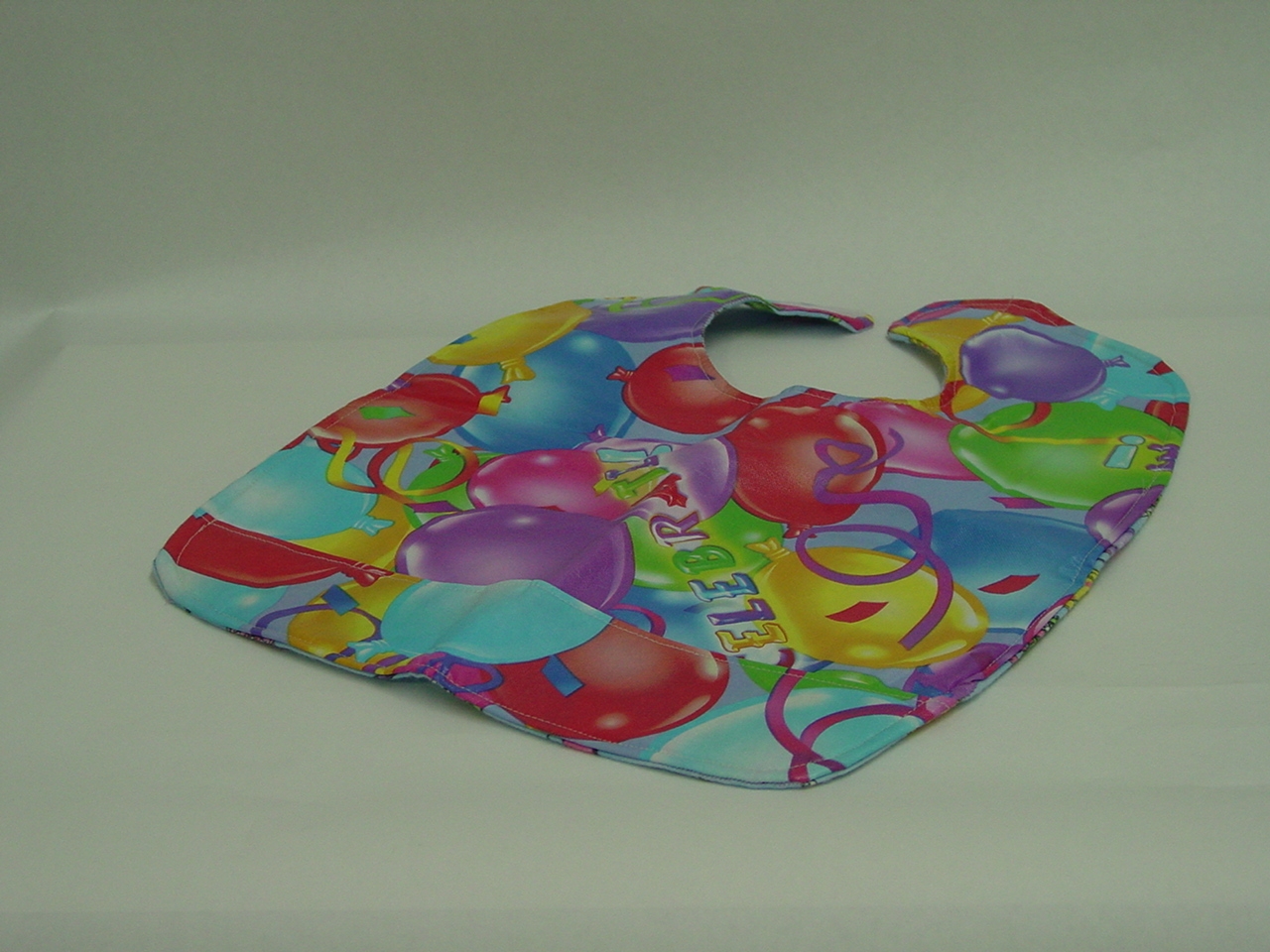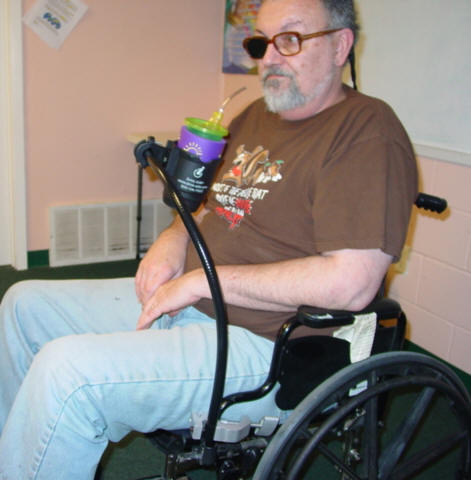Mealtime Partners, Inc.
Specializing in Assistive Dining and Drinking Equipment
November 2010 Independent Eating and Drinking Newsletter
 |
November Topics: |
||
|
Mealtime
Partners Home Page Send a Comment or Suggestion |
|||
For an individual who lacks the ability to self-feed, their prior experience with eating should be taken into consideration when evaluating how to provide assistive technology to facilitate their gaining mealtime independence (whether it is an adapted utensil or a more sophisticated powered dining device). This is necessary because the strategies used to implement the use of any equipment will need to be different depending upon the individual’s history.
There are two major categories of people who are dependent upon others for their nutritional needs: those who were born with a disability; and, those who acquired their disability through an accident, illness, or disease. The people who have an acquired disability have experienced what it is like to feed themselves. Therefore, they do not need to be told how to eat even though they are currently being fed. Rather, they need to be assessed as to the most appropriate equipment to allow them to regain independence in eating and to be provided with training on the new equipment.
For those who have never experienced eating independently, much more instruction will be required. Many people wrongly assume that because someone has observed other people eating, that they will understand how to do it themselves. Despite observing other people eating, without actually experiencing eating, there are gaps in people’s understanding of all of the elements necessary to eat. Articles in the May 2010 Newsletter and June 2010 Newsletter discussed Promoting Self Feeding and Eating Versus Being Fed. The information in these articles provides a basic explanation of how the lack of experiencing independent eating puts the user at a great disadvantage when they begin to learn to eat using assistive technology. For example, many people who have always been fed do not understand that they must take food off of a spoon to eat it. They expect the food to be placed into their mouth because that is how it has always been done for them. When a spoonful of food is placed near their lips by a dining device, they may wait for the food to be put into their mouth by the device. The caregiver or healthcare professional working with them may be required to prompt them to take the food off of the spoon.
Regardless, of their level of ability, the steps that go along with eating independently should be broken down and explained to the consumer. Don’t expect someone to automatically close their lips over a utensil if they have never placed a utensil in their mouth before (because they have always had other people do it for them before). Likewise, do not presume that they will understand that they need to either remove the utensil from their mouth or move backwards off of the utensil, or that they will keep their mouth closed during this process to clear the food from the utensil into their mouth. For most individuals simply explaining what they must do is enough for them to understand what is needed. For others, verbal prompting and physical assistance in doing what is necessary may be required.
Head positioning also varies between the two groups of people being discussed. Those who have fed themselves will keep their head (if physically possible) at about the same level as they did before becoming disabled. For those who have never fed themselves, their inclination is to raise their chin. It is wise to encourage those who tip their head upward to lower their chin when they are eating for improved safety, as we have discussed in many of our Newsletters.
In summary, it is important to understand the differences in the support that will be needed for those with congenital disabilities and those who have acquired disabilities and provide a far more comprehensive level of support to those who lack the experience of independent eating regardless of whether they are going to use adaptive utensils, mobile arm supports, non-powered dining equipment, or powered dining equipment like the Mealtime Partner Dining System.
Christmas is rapidly approaching
and Mealtime Partners has many products that make wonderful gifts.
| Cover-ups protect clothing during meals while providing easy clean-up after the meal. The advantage of the Cover-Ups is that they do not require laundering after each meal. | Or, have you considered a drinking system? One of our Drinking Systems would make a wonderful gift for that special loved one. | |
 |
 |
|
| Cover-ups have a soft vinyl outside and are lined with soft
flannel and are comfortable to wear because of the softness of
the materials.
|
Due to the great importance of proper hydration, Mealtime Partners believes that everyone should be provided the means to drink at any time they wish. | |
| Cover-Ups are very popular at schools and other Institutions where quick clean-up is important. | Drinking is not just for mealtimes! | |
| Or, to view our complete line | of | products, click here. |
Rationale behind some of the Mealtime Partner Features
Frequently people inquire about some of the features that are incorporated into the Mealtime Partner Dining System and the benefits that are gained from them. The features are included in its design as a result of extensive research into user requirements, and to provide a single design that can meet the needs of individuals who have extremely diverse diagnoses. For those who are not familiar with the device, this article will explain the rationale behind a few of the features.
Using the device can be considered from three aspects: how the device is positioned so that a user can access it; how the user actually controls the device; and, how a caregiver (or healthcare professional) sets up the device for a specific user.
There are four different mounting systems available for positioning the equipment for access by the user: the Support Arm (the most versatile), Mounting Shafts of different lengths, Legs of different lengths, and the small feet on the bottom of every unit. Both the Support Arm and the Mounting Shafts come with a Clamp for clamping to a table. When selecting a positioning system, the first question to ask is how does the user sit at mealtimes? If they sit in a powered wheelchair it is unlikely that their knees can fit under a standard dining table and in that case, the device would need to be mounted on either the Mounting Shafts or the Support Arm. The same logic applies if the user has a laptray on their wheelchair. These mounting systems allow the device to be pivoted towards the user who is sitting slightly away from the table. If the user can put their knees under the dining table, the device can be mounted on Legs or positioned directly on the table using the feet, depending upon height differences between the device and the user. Thus the same device can accommodate many seating needs by just changing the mounting system.
The device can be controlled by the user using two, one or no Adaptive Switches. (Adaptive Switches can be obtained from many sources and are readily available online, or directly from Mealtime Partners, Inc.). Having two switches empowers the user to control all of the device actions, from selecting which bowl they will eat out of, to when they will take each bite of food. It would seem that everyone would want to operate the device in this way wouldn’t it? But what if you fatigue easily? Or you burn too many calories operating switches. In those situations, a compromise should be reached by using fewer switches. The Mealtime Partner allows for a variety of configurations. The user can’t access their choice of food quite as quickly using one switch or without using any switches, nevertheless, with this versatile device you still have the ability to select what and when you eat. (The device uses a special spoon touch sensor that determines if the food is touched, to replace the switches that have been removed.) The method can be changed at any time simply by turning the device off, plugging in one or two switches or not plugging any switches into the device, and turning the device on again. (The device determines the switch configuration at turn-on.) Being able to change the number of switches is valuable because individuals who have a changing level of function can have the device changed to meet their current need whether it be improving or degenerating.
What about operating speeds? If you have a spinal cord injury that prohibits you from feeding yourself, you most probably will take a bite of food off of the spoon as soon as the food is presented to you. Once you have the food in your mouth you will want the spoon to move back to its position over the bowl. However, if you have cerebral palsy your oral motor coordination may not be able to work as quickly and you may need to make several attempts to clear the food from the spoon before you are ready for the spoon to retract. The device timing can easily be changed to accommodate both needs equally well. However, although it has a wide range of timing capabilities for every function, the device is usable for the great majority of individuals with the settings as it comes from the factory.
Additionally, the Mealtime Partner Dining System facilitates users who have varying levels of intellectual function. Its mechanical design along with the use of clear transparent bowls allows one food selection to be seen at a time so that a user can sequence from bowl to bowl until they see the food that they wish to eat. Both the food being offered and the action of the spoon occur on a level that allows the user a clear view. They do not need to anticipate or predict what might happen next. Instead, the device will sequence through serving a spoonful of food within their immediate view. In addition, it does not have any sudden movements or changes of direction (like all of the earlier attempts at feeding devices), to avoid triggering startle reflexes. These considerations allow people with varying levels of intellectual disability to be able to use this device. Thus their world of opportunity is expanded to include the experience of self feeding and in doing so, broadens their capabilities to include a time consuming activity of daily living.
The above examples
are just a few of the features of the Mealtime Partner Dining System
that make it unique, and the only device ever designed that can serve
the needs of most individuals who cannot feed themselves. That is why
the Mealtime Partner
Dining System has so many features. (And there are many more
features that
will be described in future articles). Tip of the Month: When
someone in a wheelchair is seated in a restaurant by the
restaurant host or hostess, the person who is with them is
typically seated across the table from them. If the person needs
assistance during the meal this position makes it impossible for
their companion to assist them without getting up and moving or
reaching across the table, which is very inconvenient. When
being seated, ask the hostess to arrange the seating so that you
can sit side by side, or at a right angle to each other.
Mealtime Partners Website Navigation:
Home | Dining | Drinking | Videos | Products | Warranty | Ordering | Calendar | FAQ | Newsletters | Contact
Please send comments and suggestions to newsletters@mealtimepartners.com
Copyright © Mealtime Partners, Inc. 2010
All rights reserved.